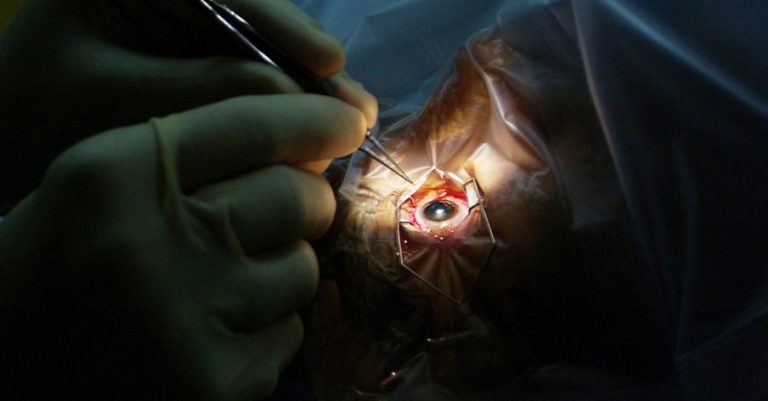Revision Eye Surgery: What You Need To Know
Eye surgeries, ranging from LASIK to cataract removal, have transformed the lives of millions, offering clearer vision and improved quality of life. However, not all surgeries yield perfect results, and some patients may require a secondary procedure known as revision eye surgery. This article explores what revision eye surgery entails, why it might be necessary, the various types, preparation, risks, and the recovery process.
Understanding Revision Eye Surgery
A follow-up technique called revision eye surgery is done to enhance or rectify the outcomes of an initial eye surgery. This can involve fixing complications, enhancing outcomes, or addressing new issues that have arisen post-surgery. The goal is to achieve the best possible vision and eye health for the patient.
Why Revision Eye Surgery Might Be Necessary
Several reasons might necessitate revision eye surgery:
- Residual Vision Problems: After surgeries like LASIK or cataract removal, some patients may still experience vision issues such as blurred vision, halos, glare, or astigmatism.
- Complications from Initial Surgery: Complications such as infection, scarring, or incorrect healing can require corrective procedures.
- Changes in Vision Over Time: Even after successful surgery, vision can change over time due to aging or other factors, necessitating further intervention.
- Incomplete Correction: Sometimes, the initial surgery may not fully correct the vision problem, and additional surgery is needed to achieve optimal results.
- Development of New Eye Conditions: New conditions such as secondary cataracts or retinal problems may develop, requiring additional surgical intervention.
Types of Revision Eye Surgery
There are various types of revision eye surgery, each tailored to address specific issues related to different initial eye surgeries:
- Revision LASIK Surgery: If the original LASIK surgery did not fully correct vision or resulted in complications, a second LASIK procedure might be necessary. This can involve enhancing the previous correction or addressing issues like flap complications.
- Secondary Cataract Surgery: Also known as posterior capsulotomy, this procedure addresses a common complication where the lens capsule becomes cloudy after cataract surgery. A laser is used to create a clear opening in the cloudy capsule.
- Retinal Detachment Repair: If the retina detaches after an initial surgery, a revision surgery such as vitrectomy, scleral buckle, or pneumatic retinopexy might be required to reattach the retina.
- Corneal Transplant Revisions: If a corneal transplant fails or develops complications, a secondary transplant or other corneal surgery may be necessary.
- Glaucoma Surgery Revisions: If glaucoma surgery does not adequately control eye pressure, additional procedures like trabeculectomy revision or insertion of a drainage device may be required.
Preparing for Revision Eye Surgery
Preparation for revision eye surgery is crucial for ensuring the best possible outcome. Here are some steps to consider:
- Consultation and Evaluation: Schedule a thorough evaluation with your ophthalmologist to determine the exact nature of the problem and the best course of action. This may involve various diagnostic tests and imaging.
- Medical History Review: Provide a comprehensive medical history, including details of the initial surgery, any complications, and your overall health status.
- Discussing Expectations: Have an open discussion with your surgeon about your expectations, potential risks, and the realistic outcomes of the revision surgery.
- Pre-Surgery Instructions: Follow any pre-surgery instructions given by your doctor, which may include discontinuing certain medications, fasting, or using specific eye drops.
Risks and Considerations
Like any surgical procedure, revision eye surgery comes with its own set of risks and considerations:
- Infection: Although rare, there is a risk of infection with any eye surgery. Adhering to post-operative care instructions can help mitigate this risk.
- Scarring: Scar tissue from the initial surgery may complicate the revision procedure and affect outcomes.
- Inflammation: Inflammation is a common response to surgery and can impact healing and vision.
- Vision Fluctuations: After revision surgery, it is normal for vision to fluctuate as the eye heals and adjusts.
- Additional Procedures: In some cases, more than one revision surgery may be necessary to achieve the desired result.
- Outcomes: While revision surgery aims to improve vision, it may not always result in perfect vision and can sometimes lead to further complications.
Recovery Process
The recovery process for revision eye surgery can vary depending on the type of surgery performed and the individual patient. Here are some general guidelines:
- Post-Surgery Care: Observe any post-operative guidelines that your surgeon has given you. This may include using prescribed eye drops, avoiding certain activities, and attending follow-up appointments.
- Rest and Recovery: Allow your eyes to rest and avoid strenuous activities that could strain your eyes during the initial recovery period.
- Monitoring for Complications: Be vigilant for any signs of complications such as increased pain, redness, swelling, or sudden changes in vision. Report any concerns to your doctor immediately.
- Gradual Improvement: Understand that vision improvement can be gradual, and it may take several weeks to months for your vision to stabilize fully.
- Follow-Up Appointments: Attend all scheduled follow-up appointments to monitor healing and address any issues promptly.
Choosing the Right Surgeon for Revision Surgery
Selecting the right surgeon for your revision eye surgery is critical for a successful outcome. Consider the following when choosing a surgeon:
- Experience and Expertise: Look for a surgeon with extensive experience in performing revision eye surgeries and a track record of successful outcomes.
- Specialization: Ensure the surgeon specializes in the specific type of revision surgery you require.
- Patient Reviews: Read patient reviews and testimonials to gauge the surgeon’s reputation and patient satisfaction.
- Consultation: Schedule a consultation to discuss your case in detail and assess the surgeon’s approach and communication style.
Conclusion
Revision eye surgery is a valuable option for patients who experience complications or less-than-ideal outcomes from their initial eye surgery. Understanding the reasons for revision surgery, the types available, preparation steps, potential risks, and the recovery process can help patients make informed decisions and achieve the best possible vision and eye health. By choosing an experienced and specialized surgeon, adhering to pre- and post-surgery instructions, and maintaining realistic expectations, patients can navigate the complexities of revision eye surgery with confidence.
For any further queries, Plz visit drvivekgarg.in








